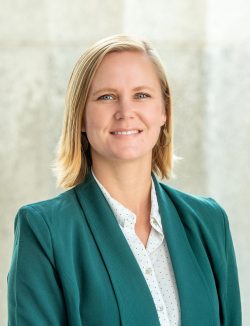Sponsored: State of Vermont
5 Lessons in Success Vermont Has Learned After 40 Years as a Captive Domicile

When the State of Vermont signed its captive bill into law in 1981, it became one of the first states to offer a competitive onshore alternative to Bermuda or the Cayman Islands. Since then, it has become the “Gold Standard” of onshore domiciles, with over 1,200 captives licensed, including single-parent structures, risk retention groups, affiliated reinsurance companies and everything in between.
“We started out slow and cautious, with a board consisting of captive managers and insurance brokers examining every application. We licensed one captive that first year, three the second year, and it wasn’t until the third year that we got up to 10 captives,” said Dave Provost, Deputy Commissioner, Captive Insurance, Vermont Department of Financial Regulation.
“Then, in 1986, there was tax reform, a hard market and the Risk Retention Act. That combination of events drove things forward. It took us five years to license 30 captives, but in 1986 we licensed 36, then 50 the following year. Since then, it’s been a steady 25 to 40 captives per year.”
In the 40 years since the passing of the 1981 law, Provost and the rest of Vermont’s captive industry leaders have learned a few things. Based on their experience, here are five key ingredients necessary to make a domestic domicile work:
1) Legislators Who Listen

Dave Provost, Deputy Commissioner, Captive Insurance, Vermont Department of Financial Regulation
Any business benefits from a balance between high quality regulatory oversight and legislative support. Over the years, captives have adopted new structures and taken on non-traditional risks — evolutions that would not have been possible if state legislators were unwilling to adapt to changing needs.
“They’ve worked with us over the past 40 years to bring us into compliance with all of the NAIC’s (National Association of Insurance Commissioners) exam and surveillance procedures. They worked with us to bring in new kinds of captives, including affiliated reinsurance companies, sponsored cell, and special purpose financial captives,” Provost said.
“We work together to update our captive laws every year to ensure they are still working for the community.”
Some of the legislative efforts have been smaller, but meaningful, nonetheless. Adjustments to when taxes or annual reports are due, for example, or changes in capital requirements, have made things a little easier on the business community without hindering the efficacy of regulation.
“The legislature in Vermont and government leadership has asked a lot of great questions and tried to understand the industry and support it along the way so that Vermont can evolve with the changing needs of the industry and modernize Vermont’s statutes and regulations over time to keep pace with it,” said Brittany Nevins, Captive Insurance Economic Development Director, Vermont Department of Economic Development. “I think that level of collaboration is really unique in the industry.”
2) A Fully Supported Regulatory Department

Brittany Nevins, Captive Insurance Economic Development Director, Vermont Department of Economic Development
A key difference between Vermont and other domestic domiciles is that the state fully invests in the administration, regulation and promotion of its captive business.
“A key provision in our original law was that we charge a tax, used to staff a department to monitor and regulate captive companies. Today that team is 30 members strong. Having those examiners in-house enables us to better control the costs of regulation and builds a greater sense of dedication to the state of Vermont,” Provost said.
The state also devotes a portion of the budget to marketing and promotion of the captive sector. In most domiciles, this job is left to regulators, which sometimes clashes with their directive of enforcing standards and weeding out bad business.
“It’s tough to attract people to your market when you know there’s a chance you’ll have to turn down a business that doesn’t fit your criteria,” Nevins said. By having a separate marketing function, regulators are able to focus on what they do best and the state is able to take full advantage of more opportunities to promote itself.
“Ultimately, our captive companies really value the oversight our regulators provide because it helps to make their business better. We know the experience and expertise of our regulators is a big differentiator,” Nevins said.
3) A Strong Infrastructure
The State of Vermont has 24 approved captive managers supported by countless service providers. As always, quality matters. Companies are regularly examined to ensure work is done correctly and consistently.
“We look at a captive management company’s internal control policies and their IT procedures. We look at the auditors’ papers to make sure they are using appropriate auditing techniques and following the auditors’ rules. Same with the actuaries. We determine that they’re making appropriate judgment calls using standard actuarial methodology. We hire other actuaries to look at the actuaries’ work,” Provost said.
“We hold everyone’s feet to the fire because without reliable service providers, a captive is exposed to a number of operational and compliance risks.”
The formation of the Vermont Captive Insurance Association (VCIA) in the late 1980s also brought business and educational opportunities to the state that helped build the captive infrastructure. The association’s seminars, webinars and annual conference help to keep everyone up to date on the latest regulatory and legislative trends and explore the many ways captives can be adapted to cover challenging risks.
This helps service providers gain a better understanding of captive structures and purposes, and ultimately deliver a higher level of service.
4) Investment in Community
The VCIA also brings cohesion to the captive community through networking opportunities. Though relationship building has been a little more difficult this year given the lack of face-to-face interaction, an active association nonetheless serves as a link between the many professionals who make up Vermont’s captive infrastructure.
First launched in the 1990s, the VCIA annual conference was for many years the only game in town. All the domiciles had a presence at this conference, and still do. Once things get back to normal, Provost expects attendance to be back up to over 1,000 people per year.
“The conference has really helped to foster a sense of camaraderie, and for the captive owners, managers and service providers in our state, a sense of pride in Vermont. I think it’s important that the captive industry here feels fully a part of and supported by the business community as a whole,” Nevins said.
Vermont also requires captive managers to have a physical presence in the state.
“That really was a contributor to our success. We now had people working in Vermont with a more vested interested in the state’s success. That drove a good deal of investment of time and money and effort by the managers and by the rest of the infrastructure working with them into the local community,” Provost said.
5) A Focus on the Future
The diversity of captive structures in Vermont is indicative of the creative and innovative approach that owners and managers have adopted. General liability, auto and workers’ comp may be the most common lines of business covered by captives, but more challenging risks – including employee benefits, cyber and management liability – have also found homes in captives as traditional markets harden.
Legislative support, regulatory expertise, and a strong infrastructure are all necessary for companies to explore alternative risk transfer solutions through their captives.
“We always want to be innovative, and support our captive companies thinking outside the box,” Provost said. “Really the way that we do that is by keeping our quality-first approach. That’s the foundation for everything.”
Vermont is also planning for the next 40 years by addressing the talent shortage plaguing the insurance industry as a whole.
“There’s been an ongoing lack of diversity in the industry, age and otherwise, and we plan to intentionally work on improving those gaps. We’re hoping to work with colleges and universities to raise awareness about the captive industry as a career field. Bringing new people from a diverse background into this industry will usher in new skillsets and increase diversity of thought, and that will only make us stronger,” Nevins said.
“First, though, we want to celebrate our 40th anniversary with the captive community in Vermont. We want to congratulate our community on a job well done, and we’ll do that both at the 2021 virtual VCIA annual conference and other events during the year. Stay tuned for more details.”
To learn more about Vermont’s captive industry, visit www.vermontcaptive.com.
This article was produced by the R&I Brand Studio, a unit of the advertising department of Risk & Insurance, in collaboration with State of Vermont. The editorial staff of Risk & Insurance had no role in its preparation.










